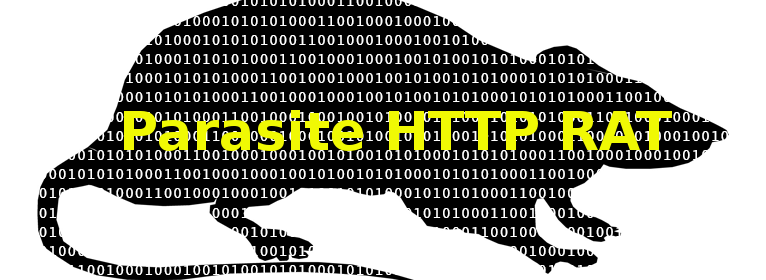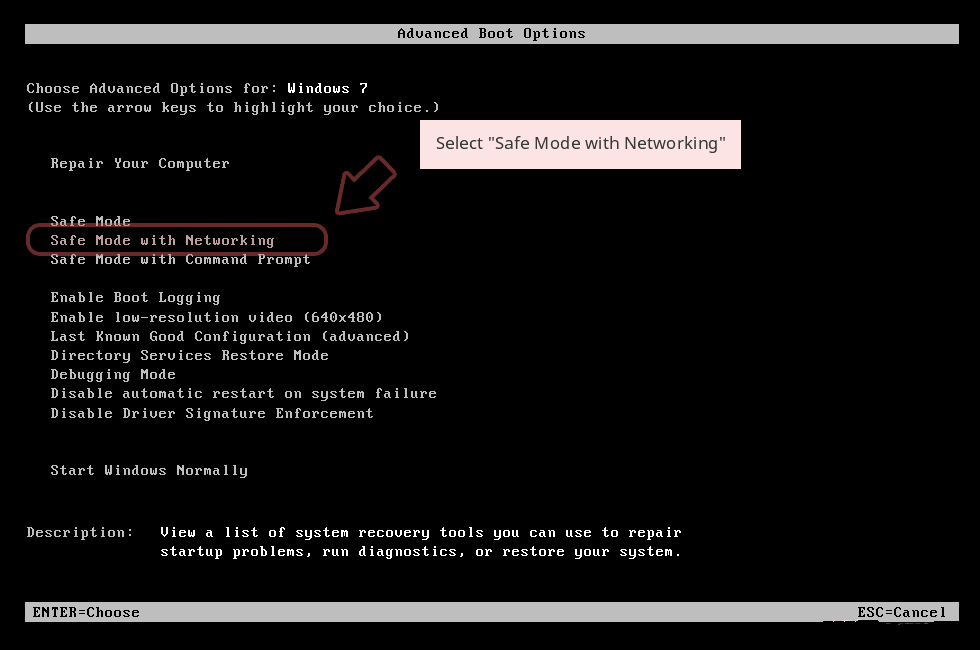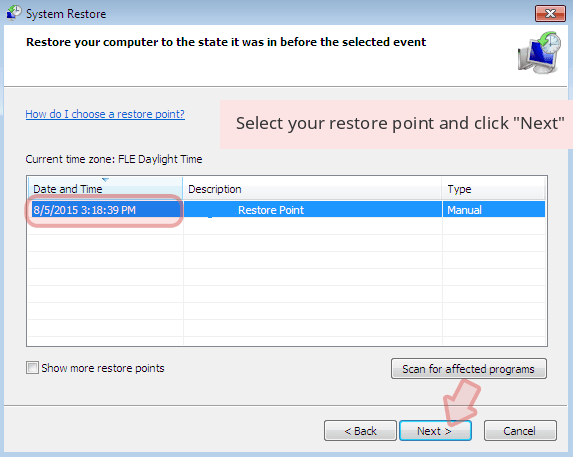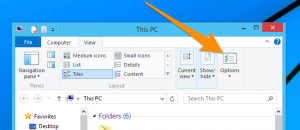This post is a comprehensive guide of Parasite HTTP RAT and it's removal solution. So, if you are another victim of such a malware and want to remove it easily and completely then go through with this expert's guidelines completely.

Threat's Profile of Parasite HTTP RAT
| Threat's Name | Parasite HTTP RAT |
| Type | Remote Access Trojan |
| Category | Malware |
| Discovered on | July 2018 |
| Risk Impact | Very High |
| Infected Systems | Windows OS |
| Mainly Targeted | Job search agencies and Human source departments |
| Payload | MS Word files with macro enabled attachment, infected devices, pirated software, spam campaign, bundling method etc. |
| Primary Aim | It is mainly designed to download the encrypted shell, decrypt payload, perform series of checks for debugging the tool and analyze the kits before installing malware. |
| Removal Recommendation | Download Windows Scanner Tool, to detect and delete Parasite HTTP RAT from PC. |
All Important Points That You Must Know About Parasite HTTP RAT
Parasite HTTP RAT is a newly discovered remote access Trojan that is mainly known for extensive array of method that it incorporated for the sandbox detection, anti-emulation, anti-debugging and several other protections. After the depth analysis by researchers, they revealed that this malware is very modular in nature that allows the con artists or developers of Parasite HTTP RAT to add several new capabilities.
The team of security analysts reported that Parasite HTTP RAT is written in the C language and this malware has only 79kb file size. This malware is supported the dynamic API calls including encrypted strings and communicates with the secure and dedicated command and control panel which is mainly written in the PHP. It often communicated in locked of encrypted format and capable to bypass firewall as well as all security measures.
Parasite HTTP RAT usually works with series of the add-ons or plug-ins such as FTP password recovery, user management, IM password recovery, browser password recovery, reverse Socks5 proxy, email password recovery, Windows licenses keys recovery and hidden VNC. It has string obfuscation and a sleep routine that delays its execution after checking that whether exception handler is executed or not and how much time has elapsed. It is very harmful for affected machine. Therefore, it is highly advised to delete Parasite HTTP RAT from affected machine ASAP.
Campaign of Parasite HTTP RAT
Parasite HTTP RAT is mainly targeted the human source departments and job search agencies. It distributed as a spam messages purported to CV submission. The messages of its related malware contained MS Word attachments that enabled macros. Open of any spam message or downloading of any dubious attachment may lead your System to Parasite HTTP RAT infection. To avoid PC having Parasite HTTP RAT or other remote access Trojan, you should never open any suspicious attachment or message arrived to your inbox from unknown person or sources.
>>Free Download Parasite HTTP RAT Scanner<<
Manual Parasite HTTP RAT Removal Guide
Step 1: How to Start your PC in Safe Mode with Networking to Get Rid of Parasite HTTP RAT
(For Win 7 | XP | Vista Users)
- first of all PC is to be rebooted in Safe Mode with Networking
- Select on Start Button and Click on Shutdown | Restart option and select OK
- when the PC restarts, keep tapping on F8 until you don’t get Advanced Boot Options.
- Safe Mode with Networking Option is to be selected from the list.

(For Win 8 | 8.1 | Win 10 Users)
- Click on Power Button near Windows Login Screen
- Keep Shift Button on the keyboard pressed and select Restart Option
- Now Select on Enable Safe Mode with Networking Option

In case Parasite HTTP RAT, is not letting your PC to Start in Safe Mode, then following Step is to followed
Step 2: Remove Parasite HTTP RAT Using System Restore Process
- PC need to be rebooted to Safe Mode with Command Prompt
- As soon as Command Prompt Window appear on the screen, select on cd restore and press on Enter option

Type rstrui.exe and Click on Enter again.

Now users need to Click on Next option and Choose restore point that was the last time Windows was working fine prior to Parasite HTTP RAT infection. Once done, Click on Next button.


Select Yes to Restore your System and get rid of Parasite HTTP RAT infection.

However, if the above steps does not work to remove Parasite HTTP RAT, follow the below mentioned steps
Step:3 Unhide All Hidden Files and Folders to Delete Parasite HTTP RAT
How to View Parasite HTTP RAT Hidden Folders on Windows XP
- In order to show the hidden files and folders, you need to follow the given instructions:-
- Close all the Windows or minimize the opened application to go to desktop.
- Open “My Computer” by double-clicking on its icon.
- Click on Tools menu and select Folder options.
- Click on the View tab from the new Window.
- Check the Display contents of the system folders options.
- In the Hidden files and folders section, you need to put a check mark on Show hidden files and folders option.
- Click on Apply and then OK button. Now, close the Window.
- Now, you can see all the Parasite HTTP RAT related hidden files and folders on the system.

How to Access Parasite HTTP RAT Hidden folders on Windows Vista
- Minimize or close all opened tabs and go to Desktop.
- Go to the lower left of your screen, you will see Windows logo there, click on Start button.
- Go to Control Panel menu and click on it.
- After Control Panel got opened, there will two options, either “Classic View” or “Control Panel Home View”.
- Do the following when you are in “Classic View”.
- Double click on the icon and open Folder Options.
- Choose View tab.
- Again move to step 5.
- Do the following if you are “Control Panel Home View”.
- Hit button on Appearance and Personalization link.
- Chose Show Hidden Files or Folders.
- Under the Hidden File or Folder section, click on the button which is right next to the Show Hidden Files or Folders.
- Click on Apply button and then hit OK. Now, close the window.
- Now, to show you all hidden files or folders created by Parasite HTTP RAT, you have successfully considered Windows Vista.

How to Unhide Parasite HTTP RAT Created Folders on Windows 7
1. Go to the desktop and tap on the small rectangle which is located in the lower-right part of the system screen.
2. Now, just open the “Start” menu by clicking on the Windows start button which is located in the lower-left side of the PC screen that carries the windows logo.
3. Then after, look for the “Control Panel” menu option in the right-most row and open it.
4. When the Control Panel menu opens, then look for the “Folder Options” link.
5. Tap over the “View tab”.
6. Under the “Advanced Settings” category, double click on the “Hidden Files or Folders” associated with Parasite HTTP RAT.
7. Next, just select the check-box in order to Show hidden files, folders, or drives.
8. After this, click on “Apply” >> “OK” and then close the menu.
9. Now, the Windows 7 should be configured to show you all hidden files, folders or drives.

Steps to Unhide Parasite HTTP RAT related Files and Folders on Windows 8
- First of all, power on your Windows PC and click on start logo button that is found in left side of the system screen.
- Now, move to program lists and select control panel app.
- When Control panel is open completely, click on more settings option.
- After, you will see a Control panel Window and then you choose “Appearance and Personalization” tab.
- In Advance settings dialogue box, you need to tick mark on Show hidden files and folders and clear the check box for Hide protected system files.
- Click on Apply and Ok button. This apply option helps you to detect and eradicate all types of Parasite HTTP RAT related suspicious files.
- Finally, navigate your mouse cursor on close option to exit this panel.

How to View Parasite HTTP RAT associated folders on Windows 10
1. Open the folder if you wish to unhide files.
2. Search and Click on View in Menu bar
3. In Menu click on to view folder options.
4. Again click on View and Enable Radio Button associated with Show hidden files created by Parasite HTTP RAT, folder and drive.
5. Press apply and OK.

Step 4: Press Start Key along with R- copy + paste the below stated command and Click on OK
notepad %windir%/system32/Drivers/etc/hosts
- This will open up a new file, in case if your system has been hacked, some IP’s will be shown at the bottom of the screen

Click on the Start Menu, Input “Control Panel” in the search box —> Select. Network and Internet —> Network and Sharing Center —> Next Change Adapter Settings. Right-click your Internet connection —> Select on Properties.
- In case if you find Suspicious IP in the local host –or if you are finding it difficult and have any problem then submit question to us and we will be happy to help you.




